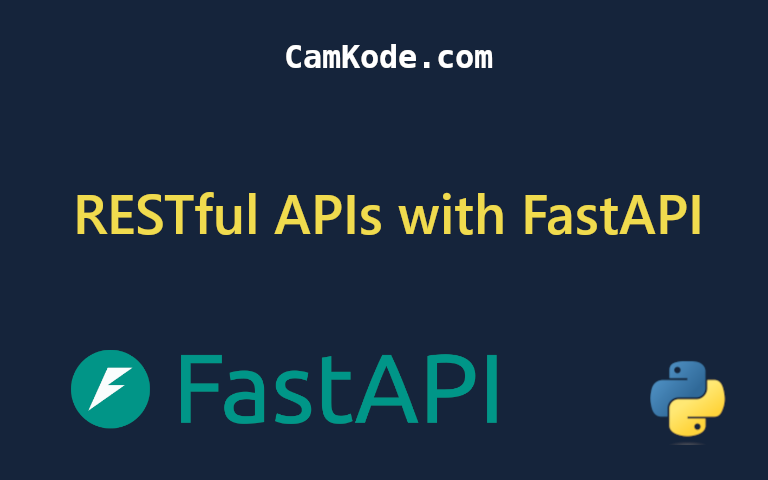FastAPI: Building High-Performance RESTful APIs with Python
Posted by Kosal

FastAPI, a modern web framework for building APIs with Python, combines high performance, ease of use, and automatic interactive documentation generation. In this comprehensive guide, we'll explore how to leverage FastAPI to create RESTful APIs quickly and efficiently.
Step 1: Installing FastAPI:
Start by installing FastAPI and Uvicorn, a lightning-fast ASGI server, using pip:
pip install fastapi uvicorn
Step 2: Creating a FastAPI App:
Create a new Python file (e.g., main.py) and define your FastAPI app:
# main.py
from fastapi import FastAPI
app = FastAPI()
@app.get("/")
async def read_root():
return {"message": "Hello, World"}
Step 3: Running the Development Server:
Start the development server using Uvicorn:
uvicorn main:app --reload
This command starts the server, and the --reload flag enables automatic reloading of the server when code changes are detected.
Step 4: Defining API Endpoints:
Define your API endpoints using FastAPI's intuitive decorators:
# main.py
from fastapi import FastAPI, HTTPException
app = FastAPI()
fake_items = [{"item_name": "Foo"}, {"item_name": "Bar"}, {"item_name": "Baz"}]
@app.get("/")
async def read_root():
return {"message": "Hello, World"}
@app.get("/items/{item_id}")
async def read_item(item_id: int, q: str = None):
if item_id >= len(fake_items):
raise HTTPException(status_code=404, detail="Item not found")
if q:
return {"item_id": item_id, "item_name": fake_items[item_id]["item_name"], "q": q}
return {"item_id": item_id, "item_name": fake_items[item_id]["item_name"]}
Step 5: Testing Your API:
Test your API endpoints using tools like curl, Postman, or HTTPie:
curl -X GET http://127.0.0.1:8000/items/1
Step 6: Documentation with Swagger UI:
FastAPI generates interactive API documentation using Swagger UI. Visit http://127.0.0.1:8000/docs in your browser to explore and test your API interactively.
Step 7: Deploying Your FastAPI App:
Deploy your FastAPI app to your preferred hosting platform using ASGI servers like Uvicorn or Hypercorn behind a reverse proxy like Nginx or Traefik.
Conclusion: FastAPI offers a powerful and efficient way to build RESTful APIs with Python. With its automatic documentation generation, high performance, and ease of use, FastAPI is an excellent choice for developers looking to create robust and scalable APIs quickly. Whether you're building a simple CRUD API or a complex microservices architecture, FastAPI provides the tools and flexibility you need to succeed.